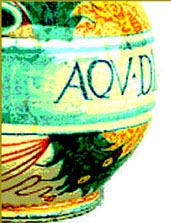|
Se ha realizado un estudio de la licenciatura de Ciencia y Tecnología de los Alimentos a través de los planes de estudios de las diferentes universidades españolas. Hemos comparado los créditos totales de la licenciatura (valores medios) por curso y asignatura y analizado el porcentaje de troncalidad, obligatoriedad, optatividad y libre configuración. Se han distribuido las asignaturas en materias troncales para su mejor estudio. Los créditos totales de la licenciatura son 146,06 con una desviación estándar de 6,11. La contribución media de créditos por curso es 71,50 en primero y 74,56 en segundo curso. Las asignaturas se distribuyen en: troncales (64,13 %), obligatorias (9,07 %) optativas (16,37 %) y de libre configuración (10,43 %). Tecnología Alimentaria, con 22,00 ± 6,71 y un porcentaje medio de 23,20 % créditos, supone la materia troncal que más peso tiene en la licenciatura. Los planes de estudios cumplen con las directrices generales, aseguran una adecuada formación y satisfacen las necesidades de los futuros egresados en esta licenciatura. |
|
|
It has been made a study of the degree in Food Science and Technology through the curricula of the different Spanish
universities. We are compared the total credits of the degree (average values), by course and subject and analyzed the
percentage of main, obligatory nature, optativety and free election. The subjects in great thematic areas for their
better study have met. The total credits of the degree are 146.06 with a standard deviation of 6.11. The average
contribution of credits by course is 71.50 in first and 74.56 in second course. The subjects are distributed in: main
(64.13 %), obligatory (9.07 %) optative (16.37 %) and of free election (10.43 %). Food Technology with 22.00 ± 6.71
and an average percentage of 23.20 % credits, supposes the thematic area that more weight has in the degree. The
curricula fulfil the general directives and assure a suitable formation and satisfy the necessities with the licensed
futures in this degree. |
|



